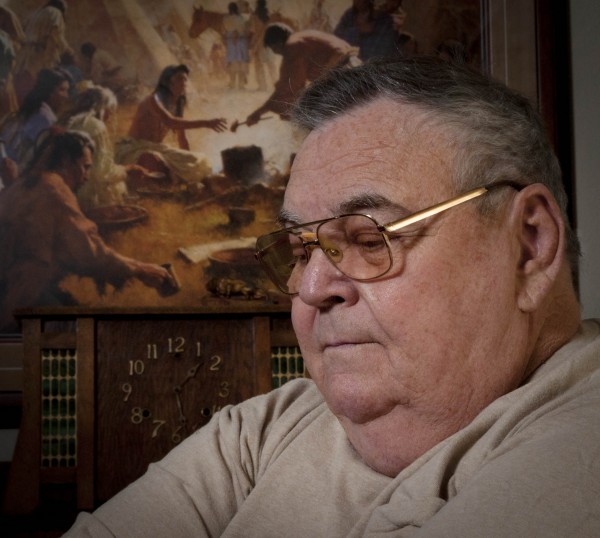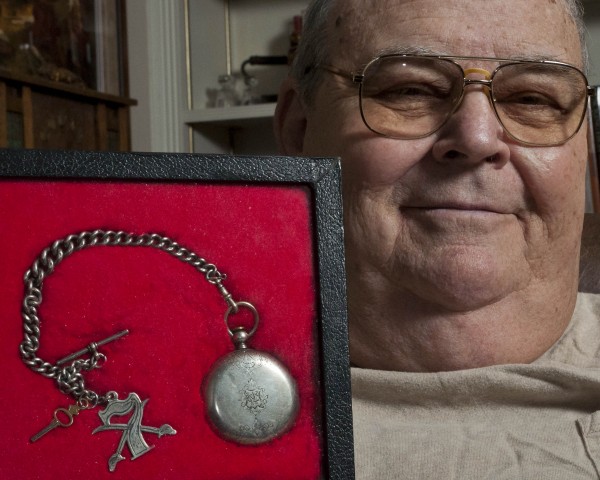No medals for kindness
Vietnam 1965 – Capt. Gordon Rozanski flew into Landing Zone X-Ray in the Ia Drang Valley on the supply helicopter. He was the supply officer for the 1st Battalion 7th Cavalry Regiment of the 1stCavalry Division (Airmobile). It was the first full-scale battle between American and North Vietnamese troops.
As the chopper landed he jumped off and started unloading supplies as bullets ripped into the side of the aircraft. He picked up wounded lying on the ground and laid them inside the chopper. Several bodies were brought over by soldiers who had wrapped their fallen friends in green rain ponchos.
“Some of the guys had dressings on their wounds, some did not. I held bandages on faces, on sucking chest wounds. One man whose arm was almost gone needed a tourniquet. We were lying on the floor of the chopper. They were stacked on each other. The ships were overloaded. We just couldn’t stop. It had to be done. I wasn’t going to let somebody die because I might get my hands bloody,” Rozanski recalls. He flew supplies in, and dead and wounded out, day and night for two days.
“As I was reloading back at Camp Holloway on one of the round trips, I talked with five solders who were going home in a few days. They saw I needed help and volunteered to fly back in with me even though they didn’t have to. Five went back in”…he paused and looked down…”only two came back.”
“After I left Vietnam I made it a point to go and talk to the parents of the three who died. I didn’t have to, but we were like family. They figured if I was going back in, they would go to. Their friends were back there,” he said.
The pilots who flew the helicopter received the Congressional Medal of Honor.
One month later, Rozanski was leading B Company 1/7 through rice paddies near the village of Bong Son in an expansion of the operation that had taken them to the Ia Drang area.
“I could hear the ‘thunk’ of an NVA mortar being fired behind us. I looked down and right in front of me I saw the tail fin of the mortar go into the rice paddy. The explosion knocked me on my keister. I was covered with mud and a little dazed. I didn’t think I was wounded. I got up and we moved toward the village in front of us.
“We stopped to wait on our helicopter gunships to take out some of the fire coming from the village. A sniper round hit me in my left elbow. My guys put me in a sling and bandages and we fought our way to the edge of the village about nightfall and stopped.
“I was flown out that night to the brigade aid station. The doctors pulled off my boots and they were full of blood. They realized I had shrapnel wounds from my chest to my ankles. They patched me up and put a body cast on me since the only thing holding my arm on was skin.
“The only thing I remember was that I was covered with mud, and, I couldn’t go to the bathroom. I had tears in my eyes. I wanted to go to the bathroom.”
Two days of flying put him into Lowry Air Force Base in Denver and he was taken to Fiztsimons Army Hospital.
“I was still nasty dirty. The surgeons cut my cast off and put me in a bed. I could finally go to the bathroom. Several nurses came in to bathe me. The head nurse was a Major, a good Irish girl. I was so grateful to finally be cleaned up.”
Fitzsimons specialized in orthopedic survey. Reattaching his forearm and rebuilding his elbow required surgery every week for the next six months.
“The surgeon who built a new elbow for me was Col. Paul Brown who I will never forget.”
Rozanski was put back on active duty and sent as an advisor to a national guard unit in Rochester, MN. He was in charge of next of kin notifications for the next year.
“I would read the telegram and spend some time with the family. I would always follow up with every one of them. I got the body to the funeral home and helped the family with other details like insurance.
“I dressed all the bodies for the funeral homes. I made sure the soldier’s uniform was correct, that the ribbons were in the right place. I would look at their faces and remember the soldiers who died at Ia Drang.
“At that time I was sent back to Fiztsimons so they could rebuild my hand and then it was time to retire. I wanted to go back to Vietnam but left the Army on February 4, 1971 at Fitzsimons.”
Rozanski became an antique dealer and appraiser.
For more information on this subject try these links:
Capt. Rozanski with B Company 1/7
Landing zone X-Ray: The first encounter
The first full scale battle between the U.S. and North Vietnam troops
Ia Drang – The battle that convinced Ho Chi Minh he could win
The second encounter: Battle of Bong Son
History of Fitzsimons Army Hospital, Denver, CO
Archive photos of activities at Fitzsimons
We Were Soldiers Once…And Young by Hal Moore and Joe Galloway
Biography of Lt. W. W. Cooke, adjutant to Gen. George Custer
Donate to the Wounded Warrior Project
SUPPORTING TRIBUTARY
Word of mouth is our most reliable resource. Please let others know about Tributary and why you appreciate the effort.
Please use the Share Your Thoughts section to add your thoughts on this story.
And, use our Facebook page to give us a story idea. Share your comments too. Let your friends know about Tributary.
Tell us your story privately, or suggest someone with an interesting story, via email at [email protected].
To be a person is to have a story to tell. – Isak Dinesen.


